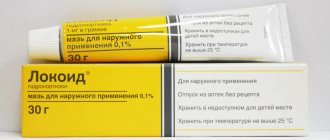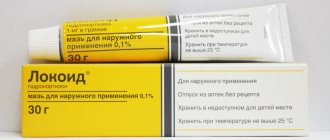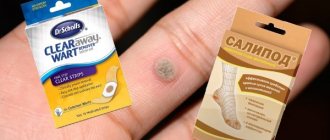Acne in adolescence is a common occurrence due to hormonal changes in the body. But if acne occurs in an older person, then pimples may indicate an imbalance. They are eliminated in such a situation with the help of specialized drugs.
These include oral contraceptives, which have two important actions for the female body - they protect against unwanted pregnancy and help cope with cosmetic defects such as acne. Will Jess help with acne?
Actions of oral contraceptives
Contraceptive drugs contain a combination of hormones that inhibit the ovulation process, that is, they prevent the release of an egg from the ovaries. In addition, they change the structure of the secretion of the cervical canal, it becomes denser, which prevents sperm from entering the uterus.
Their main task is related to this - preventing unwanted pregnancy. But there are certain contraceptives that have the property of blocking androgen receptors. They reduce the intensity of production of male sex hormones, including testosterone, in women’s bodies. It is these hormones that, as a rule, increase the activity of the sebaceous glands, which leads to the appearance of acne.
This group of oral contraceptives includes:
- "Jess."
- "Yarina."
- "Janine."
With their use, hormonal levels are stabilized, and rashes stop bothering the patient.
Rebound effect after drug withdrawal
The rebound effect in gynecology consists of temporarily “turning off” ovarian function followed by the abolition of COCs to achieve ovulation and increase the chances of pregnancy. After finishing taking COCs, the hormonal levels begin to recover, and in an enhanced form. As a result, superovulation occurs - two eggs mature and are capable of fertilization. Thus, the rebound effect is considered as one of the methods of treating infertility.
Stopping birth control pills usually does not cause unpleasant side effects, since the latest generation of pills minimize the risk of negative effects on the body. However, each woman's hormonal profile reacts differently, and each body needs time to recover.
Note!
During the period of taking COCs, as such, there is no classical menstruation, withdrawal bleeding is observed. Withdrawal bleeding occurs during the period when a woman does not take hormonal pills; it is less abundant and does not last long.
However, you should not be afraid of canceling COCs: physical activity, being under the supervision of a doctor, a balanced diet and positive emotions will help to quickly restore hormonal levels and return to a normal menstrual cycle.
Womenfirst
- Hormonal contraception. Prilepskaya, Mezhevitinova, Nazarova // Ed. V. Prilepskoy. – 2011. – 296 p.
- Modern contraception. New opportunities, safety criteria, basics of consulting. Podzolkova N.M., 2022. - 128 p.
- Drug therapy in the practice of an obstetrician-gynecologist. Pestrikova, Yurasova, Yurasov // Ed. N. Mitrokhina., 2011. - 512 p.
- Modern contraception. New opportunities and safety criteria: a guide for doctors. Podzolkova, Rogovskaya, Koloda // Ed. E. Bakalina - 2013. - 128 p.
RUS2175440 (v1.0)
Does Jess help with acne?
First of all, it should be noted that the drug is prescribed to adolescents and women in situations where they are sexually active, since the main purpose of this medication is contraception. Acne therapy is considered only a side effect of its use.
Therefore, you can use “Jess” only after consulting a gynecologist and having a blood test for hormone levels. The drug is prescribed only in the situation if it turns out that:
- The level of male hormones is increased.
- A girl or woman is worried about acne.
- At the same time, the representative of the fair half of humanity leads an active sex life.
- The woman is not planning a pregnancy.
If the patient has one goal - eliminating acne, then taking contraceptive medications is not recommended, since these are very strong drugs that have certain adverse reactions.
Therefore, before purchasing Jess birth control pills for acne, it is necessary to consult several medical specialists, for example, a dermatologist or gynecologist.
Which ones help in treating acne?
To correct hormonal disorders, only combined OCs are prescribed. The optimal tandem of synthetic hormones: ethinyl estradiol and drospirenone.
It is recommended to supplement hormonal therapy with local acne treatments with adapalene, tretinoin, azelaic acid, and benzoyl peroxide. This will speed up the effect many times over.
Yarina
Yarina is an extremely popular combined contraceptive with antiandrogenic action, low dosage.
But it does not give a prolonged effect; it has a pronounced withdrawal syndrome. Gynecologists recommend that patients with stages 1-3 acne, without manifestations of hirsutism or infertility, abandon Yarina in favor of microdosed analogues: Lindinet-20, Jess.
Jess
Jess contains 3 mg of drospirenone, 0.02 mg of ethinyl estradiol in the form of betadex clathrate. This is the best option for correcting hormonal levels in young women.
Diana-35
Diane-35 contains cyproterone acetate – 2.0 mg; ethinyl estradiol – 0.035 mg. Cyproterone has a 100% proven antiandrogenic effect, but the severity and severity of adverse reactions is much higher. Diane-35 is not recommended for young girls and women over 45 due to the frequency of adverse reactions.
Advantages
"Jess" is a contraceptive for oral use that contains estrogen and gestagen, which inhibits the excessive production of testosterone, the male sex hormone. Positive reviews from medical specialists confirm not only its effectiveness, but also many other advantages compared to drugs with similar effects:
- The hormone content in the medication is as low as possible compared to generics, which helps to achieve a milder effect on the body and reduce the severity of side effects, while the effect of the oral contraceptive also remains at a high level.
- Eliminates acne of the second degree.
- Does not provoke weight gain.
- Improves the condition of the hair and nail plate.
- Stabilizes the regularity of menstruation, helps eliminate pain during periodic bleeding.
In addition, the drug “Jess Plus” is produced, the structure of which includes folic acid. They are intended for representatives of the fair half who plan to become pregnant immediately after stopping the drug, since folic acid is needed for the proper formation of the central nervous system of the unborn baby.
Myths and reality about COC withdrawal
- After discontinuation of COCs, the menstrual cycle is disrupted and menstruation may stop
A similar phenomenon can occur and be diagnosed by a doctor as ovarian hyperinhibition syndrome, expressed in the form of secondary amenorrhea.
- Pregnancy after discontinuation of COCs is impossible
This statement only partially makes sense. Indeed, after stopping the drugs, problems with conception may arise, especially with long-term use of COCs. However, in some cases, with a favorable outcome, such a problem resolves on its own against the backdrop of normalization of ovarian function.
- When taking COCs, depression and mood swings begin
Indeed, some women note worsening mood and the development of depression while using COCs.
How quickly does the drug work?
If acne appears while using Jess, this can happen in the first or third months of use, while the body is still adjusting to new hormones. Positive dynamics can be noted no earlier than the beginning of the second menstrual cycle, then the situation may improve until the rashes are completely eliminated.
The result of “Jesa” for acne occurs with the start of using the medicine (contraceptive effect), but positive changes in a woman’s appearance will be noticeable a little later, after the second or third menstruation.
After stopping taking Jess, acne may return as the previous hormonal levels are restored. That is, the drug helps against acne only with constant use.
Minuses
Like any other hormonal contraceptive, Jess acne pills have certain disadvantages that cannot be avoided. These are negative effects after taking a medicine that may not occur to everyone. They usually appear in the first months of using the drug, while the body gets used to the new regime:
- Dizziness.
- Headache.
- Change of mood.
- Irritability.
- Decreased sexual desire.
When do side effects go away? This happens differently for all people, but, as a rule, after the second or third menstruation, the woman’s well-being completely returns to normal and no unpleasant symptoms appear in the future.
In any situation, hormonal contraceptives should be used under the supervision of the medical specialist who prescribed them. And if you have any questions or doubts, you should contact him for advice.
When it is contraindicated and side effects
The drug should not be used while taking direct-acting antivirals. Doctors do not recommend taking oral contraceptives when the patient has pathological conditions such as:
- thromboembolism, cerebrovascular pathologies, thrombosis;
- renal failure;
- migraine with neurological foci;
- liver pathologies;
- diabetes mellitus with worsening condition of the vascular system;
- formation of malignant tumors;
- pancreatitis with increased triglycerides;
- vaginal bleeding;
- lactose intolerance;
- gestation and lactation;
- hypersensitivity to substances contained in the drug.
The pharmaceutical drug "Jess" can provoke the formation of unwanted reactions. Mild nausea does not require attention, but if serious discomfort occurs, immediately stop taking contraceptives and consult a doctor. He will recommend a similar remedy for treating acne and preventing unwanted gestation. Doctors often suggest Diana-35. Main side effects:
- pain in the mammary glands;
- nausea and vomiting;
- irregular bleeding from the vagina;
- uterine bleeding;
- thromboembolism.
Consulting a gynecologist before starting to use oral contraceptives will help avoid side effects, unwanted pregnancy and eliminate the formation of acne, pimples and inflammatory processes on the face in women. Self-selection of the drug is dangerous due to the development of serious pathological processes and hormonal disorders.
Starting and skipping pills
If a woman has not used any other contraceptive drugs in the past month, then the use of “Jess” begins on the first day of menstruation. It is allowed to take the medication on the second day of the menstrual cycle, but in this situation it is already necessary to additionally use condoms during the first seven days of taking the medicine from the first package.
If an inactive pill was missed, this point can be ignored. However, they must be thrown away to avoid accidentally prolonging their use.
If the delay in taking the active tablet is less than twelve hours, then the protection is not reduced. A woman should take the missed tablet as quickly as possible and take the next one as usual.
If the delay is more than twelve hours, then contraceptive protection may be slightly reduced. The more pills a woman has missed and the closer the skip is to the inactive phase, the greater the likelihood of pregnancy. In this case, you must be guided by the following rules:
- the use of the medication should never be interrupted for more than four days;
- To achieve a stable contraceptive effect, approximately seven days of continuous use of the drug are required.
The main disadvantages of OK Jess
You need to understand that side effects are not a requirement. Most of them may not even show up in you.
- Migraine. This is especially true in the first days of use. Patients claim that headaches do not go away during the first week.
- Relatively weak impact. There are drugs that have a much stronger effect on hormonal levels. But this cannot definitely be called a disadvantage. Perhaps for some patients this, on the contrary, will be an advantage.
- High price. A package of tablets costs approximately 1,000 rubles. In pharmacies you can find similar drugs two or even three times cheaper.
How to use "Jess"
There are twenty-eight tablets in total in the package. The blister contains graphic marks that indicate the order in which they should be taken. It is necessary to take 1 tablet per day at the same time with water.
Doctors advise using oral contraceptives in the morning. Of all the tablets, twenty-four are considered active, and four are considered inactive, that is, a placebo (a substance without obvious medicinal properties). They are necessary so as not to get lost in the order of using this drug.
Each subsequent package should be started only after the previous one has been completed, without allowing breaks. Bleeding similar to menstruation may occur while using inactive tablets. How long does it take for Jess Plus to have an effect on acne? Positive dynamics can be noted seven days after the start of therapy, after which time the contraceptive effect appears.
Restrictions
The use of the drug "Jess" is contraindicated in the following situations:
- Myocardial infarction (ischemic heart disease, which occurs with the appearance of ischemic necrosis).
- Angina pectoris (a disease characterized by an unpleasant sensation in the chest).
- Thrombosis (formation of clots inside blood vessels).
- Damage to cerebral vessels.
- Diabetes mellitus (an endocrine disease characterized by improper absorption of glucose).
- High blood pressure.
- Pancreatitis (inflammation of the pancreas).
- Migraine (a neurological disease characterized by pain in the head).
- Damage to the liver and kidneys.
- Lactation.
- Smoking over the age of thirty-five.
- Malignant tumors of the genital organs or mammary glands.
Before using the medication, it is necessary to exclude conditions in the body that limit its use. To do this, it is enough to donate blood for analysis.
Contraindications and side effects
Like any medicine, Jess has contraindications and side effects.
You should refrain from taking the drug if you have:
- migraine;
- thrombosis;
- elevated sugar levels;
- uterine bleeding;
- oncological diseases;
- any kind of tumor;
- kidney and liver disease;
- pregnancy and breastfeeding.
The drug is not prescribed to patients with impaired cardiovascular function.
You need to take the pills strictly at a certain time. Violation of the schedule may lead to the development of side effects.
While taking it, the following phenomena may be observed:
- Increased skin rashes, acne.
- Severe headaches, nausea, vomiting.
- Irritability, mood swings, nervous breakdowns, depression.
- Blood pressure disorder.
- The appearance of varicose veins.
- Pain in the heart area.
- Women may experience bleeding.
Is it possible to smoke while using the drug?
Smoking while taking the medication increases the risk of arterial thromboembolism. This is a condition characterized by loss or confusion of consciousness, as well as severe weakness or fainting. It can cause death. The occurrence of thromboembolism is higher the more cigarettes a representative of the fair half smokes per day.
The risk group includes women over thirty-five years of age who smoke more than one pack of cigarettes per day. For women under this age or who smoke a small amount of cigarettes, there is no direct contraindication in this regard. If acne appears from “Jess”, what should you do?
FAQ: frequently asked questions
Are taking Jess pills and smoking compatible?
Smoking while taking Jess tablets is not a contraindication, but can be fraught with thrombosis.
Smoking and Jess are compatible, but provided that you are under 35 years old and you smoke no more than one pack per day. But I still strongly recommend that you stop smoking while taking OK, so as not to put your health at unnecessary risk.
Acne appears after stopping taking Jess. What is the reason?
Unfortunately, although the connection between stopping taking OCs and new acne is not officially advertised, thousands of reviews on forums prove the opposite.
Pimples often appear after you stop taking contraceptives, and to solve this problem you will be asked to start taking OK again. It turns out to be a vicious circle.
That is why you should take very seriously the use of not only Jess hormonal pills, but also all contraceptives in general. No amateur activities, otherwise you risk saying goodbye to a clean face for many months.
Which helps better against acne: Jess or Yarina?
As mentioned above, Jess is an analogue of Yarina. The composition and active ingredients are identical, but Jess has a lower concentration, which reduces the severity and risk of side effects at the cost of weakening the antiandrogenic effect.
Therefore, if your priority is a strong effect, your choice is Yarina.
If you don’t want to expose yourself to unnecessary risks and are ready for weaker results (compared to Yarina), choose Jess.
Why do acne appear immediately after taking Jess?
Indeed, acne is sometimes observed when starting to take Jess. An increase in the number of acne may be observed in the first two months of use.
And this is an absolutely typical reaction of the body, which you should just wait out. Already in the third month, rashes significantly decrease and the overall condition of the skin improves.
Alcohol and Jess
When taking the drug and alcoholic drinks, women are afraid that the effect of the pills may be reduced. Medical experts note that alcohol in small dosages does not reduce the contraceptive effect of the drug.
But when using oral tablets, it is forbidden to take excessive amounts of strong drinks. In case of alcohol poisoning, it is necessary to additionally use other contraceptives.
Responses
On the Internet you can find many reviews about “Jess” for acne. As a rule, representatives of the fair half evaluate this oral contraceptive positively. But there are also reviews of birth control pills from people for whom this medication was not suitable.
As a result, the oral contraceptive caused adverse reactions, including nausea, malaise, and migraines. In such a situation, doctors tried to find another, more suitable medication for women.
According to doctors' reviews of Jess for acne, it is known that the drug has a beneficial effect on the body. Opinions about the drug on various sites also say that the drug helps get rid of acne and improves skin condition.
After stopping taking the oral contraceptive, the body’s condition does not worsen, so many women respond well to this drug.
Reviews of “Jess” for acne are usually positive; adverse reactions when using it occur very rarely. Representatives of the fair half also have a positive opinion about the contraceptive. The ease of use of Jess Plus and its effectiveness are noted. But in rare situations, nausea, headaches, and mood swings still appear.
Jess® (Yaz®)
If any of the conditions/risk factors listed below currently exist, the potential risks and expected benefits of using COCs should be carefully weighed in each individual case and discussed with the woman before she decides to start taking the drug. If any of these conditions or risk factors worsen, intensify, or appear for the first time, a woman should consult her doctor, who may decide whether to discontinue the drug.
— Risk of developing VTE and ATE
The results of epidemiological studies indicate a relationship between the use of COCs and an increased incidence of VTE and ATE (such as DVT, PE, myocardial infarction, cerebrovascular disorders). These diseases are rare.
An increased risk is present after initial use of COCs or resumption of use after a dosing interval of 4 weeks or more. Data from a large prospective study suggest that this increased risk is predominantly present during the first 3 months. COCs containing levonorgestrel, norgestimate or norethisterone as a progestogen component have the lowest risk of developing VTE. The risk of VTE when taking other COCs, including the combination of drospirenone + ethinyl estradiol, may be 2 times higher than the risk of developing this complication. The choice of using a COC with a higher risk of developing VTE should only be made after consultation with the woman to ensure that she fully understands the risk of VTE associated with the combination of drospirenone + ethinyl estradiol, the effect of the drug on her existing risk factors and what the risk The development of VTE is maximum in the first year of taking such drugs.
The overall risk of VTE in patients taking low-dose COCs (<0.05 mg ethinyl estradiol) is 2-3 times higher than in non-pregnant patients not taking COCs; however, this risk remains lower than the risk of VTE in patients taking COCs. pregnancy and childbirth.
VTE can be life-threatening or fatal (in 1-2% of cases).
VTE, manifested as DVT or PE, can occur with all COCs.
It is extremely rare when using COCs that thrombosis of other blood vessels occurs, for example, hepatic, mesenteric, renal, cerebral veins and arteries or retinal vessels.
Symptoms of DVT include the following: unilateral swelling of the lower extremity or along a vein in the lower extremity, pain or discomfort in the lower extremity only when standing or walking, localized warmth in the affected lower extremity, redness or discoloration of the skin on the lower extremity.
Symptoms of PE include: difficulty or rapid breathing, sudden cough, including coughing up blood, sharp chest pain that may get worse with deep breaths, anxiety, severe dizziness, fast or irregular heartbeat. Some of these symptoms (eg, shortness of breath, cough) are nonspecific and may be misinterpreted as signs of other more common and less severe conditions (eg, respiratory tract infection).
ATE can lead to stroke, vascular occlusion, or myocardial infarction. Symptoms of a stroke include: sudden weakness or loss of sensation in the face, limbs, especially on one side of the body, sudden confusion, problems with speech and understanding, sudden loss of vision on one or both sides, sudden disturbance in gait, dizziness, loss of balance or coordination. , sudden, severe or prolonged headache for no apparent reason, loss of consciousness or fainting with or without a seizure. Other signs of vascular occlusion: sudden pain, swelling and slight cyanosis of the extremities, “acute” abdomen.
Symptoms of myocardial infarction include: pain, discomfort, pressure, heaviness, a feeling of tightness or fullness in the chest, arm or chest, discomfort radiating to the back, jaw, larynx, arm, stomach, cold sweat, nausea, vomiting or dizziness, severe weakness, anxiety or shortness of breath, fast or irregular heartbeat.
ATE can be life-threatening or fatal.
In women with a combination of several risk factors or high severity of one of them, the possibility of their mutual reinforcement should be considered. In such cases, the degree of increase in risk may be higher than with a simple summation of factors. In this case, taking Jess® is contraindicated (see section “Contraindications”).
The risk of developing thrombosis (venous and/or arterial) and thromboembolism increases:
- with age;
- in smokers (with an increase in the number of cigarettes or an increase in age, the risk increases, especially in women over 35 years old);
in the presence of:
— obesity (BMI more than 30 kg/m2);
- family history (for example, if there is a family history of venous or arterial thrombosis/thromboembolism in close relatives or parents under the age of 50 years). In the case of a hereditary or acquired predisposition, the woman should be examined by an appropriate specialist to decide on the possibility of taking COCs;
- in case of prolonged immobilization, serious surgery, any operation on the lower extremities, in the pelvic area or neurosurgical surgery, extensive severe trauma. In these situations, you should stop taking the COC (in the case of planned surgery, at least four weeks before it) and not resume it for two weeks after the end of immobilization.
Temporary immobilization (eg, air travel lasting more than 4 hours) may also be a risk factor for the development of VTE, especially in the presence of other risk factors.
- dislipoproteinemia;
- arterial hypertension;
- migraine;
— diseases of the heart valves;
- atrial fibrillation.
About 9-12 out of 10,000 women taking COCs containing drospirenone may develop VTE within a year, compared with about 6 in 10,000 women for COCs containing levonorgestrel.
The possible role of varicose veins and superficial thrombophlebitis in the development of VTE remains controversial.
The increased risk of thromboembolism in the postpartum period should be taken into account.
Peripheral circulatory disorders may also occur in diabetes mellitus, systemic lupus erythematosus, hemolytic uremic syndrome, chronic inflammatory bowel disease (Crohn's disease or ulcerative colitis) and sickle cell anemia.
An increase in the frequency and severity of migraine during the use of COCs (which may precede cerebrovascular events) is grounds for immediate discontinuation of these drugs.
Biochemical indicators indicating a hereditary or acquired predisposition to venous or arterial thrombosis include the following: resistance to activated protein C, hyperhomocysteinemia, antithrombin III deficiency, protein C deficiency, protein S deficiency, antiphospholipid antibodies (anticardiolipin antibodies, lupus anticoagulant).
When assessing the risk-benefit ratio, it should be taken into account that adequate treatment of the relevant condition can reduce the associated risk of thrombosis. It should also be taken into account that the risk of thrombosis and thromboembolism during pregnancy is higher than when taking low-dose COCs (<0.05 mg ethinyl estradiol).
— Tumors
The most significant risk factor for developing cervical cancer is persistent human papillomavirus infection. There are reports of a slight increase in the risk of developing cervical cancer with long-term use of COCs, but the relationship with COC use has not been proven. Controversy remains regarding the extent to which these findings are related to screening for cervical pathology or to sexual behavior (lower use of barrier methods of contraception).
A meta-analysis of 54 epidemiological studies showed that there is a slightly increased relative risk of developing breast cancer diagnosed in women currently taking COCs (relative risk 1.24). The increased risk gradually disappears within 10 years of stopping these drugs. Due to the fact that breast cancer is rare in women under 40 years of age, the increase in the number of breast cancer diagnoses in women who are currently or recently taking COCs is insignificant in relation to the overall risk of this disease. The observed increase in risk may be a consequence of earlier diagnosis of breast cancer in women using COCs, their biological effects, or a combination of both factors. Women who have used COCs are diagnosed with earlier stages of breast cancer than women who have never used them.
In rare cases, during the use of COCs, the development of benign, and in extremely rare cases, malignant liver tumors has been observed, which in some cases led to life-threatening intra-abdominal bleeding. In case of severe abdominal pain, liver enlargement or signs of intra-abdominal bleeding, this should be taken into account when making a differential diagnosis.
Tumors can be life-threatening or fatal.
— Other states
Clinical studies have shown no effect of drospirenone on plasma potassium concentrations in patients with mild to moderate renal failure. There is a theoretical risk of developing hyperkalemia in patients with impaired renal function with an initial potassium concentration at the upper limit of normal, while simultaneously taking medications that lead to potassium retention in the body. In women with an increased risk of developing hyperkalemia, it is recommended to determine the concentration of potassium in the blood plasma during the first cycle of taking Jess®.
Women with hypertriglyceridemia (or a family history of this condition) may have an increased risk of developing pancreatitis while taking COCs.
Although slight increases in blood pressure have been described in many women taking COCs, clinically significant increases have been reported rarely. However, if a persistent clinically significant increase in blood pressure develops while taking a COC, the COC should be discontinued and treatment for hypertension should be initiated. COCs can be continued if normal blood pressure levels are achieved with antihypertensive therapy.
The following conditions have been reported to develop or worsen both during pregnancy and while taking COCs, but their relationship with COC use has not been proven: jaundice and/or pruritus associated with cholestasis; cholelithiasis; porphyria; systemic lupus erythematosus; hemolytic-uremic syndrome; chorea; herpes during pregnancy; hearing loss associated with otosclerosis. Cases of worsening the course of endogenous depression, epilepsy, Crohn's disease and ulcerative colitis during the use of COCs have also been described.
In women with hereditary forms of angioedema, exogenous estrogens may cause or worsen symptoms of angioedema.
Acute or chronic liver dysfunction may require discontinuation of COCs until liver function tests return to normal. Recurrent cholestatic jaundice, which develops for the first time during pregnancy or previous use of sex hormones, requires discontinuation of COC use.
Although COCs may have an effect on insulin resistance and glucose tolerance, there is no need to change the dose of hypoglycemic drugs in diabetic patients using low-dose COCs (<0.05 mg ethinyl estradiol). However, women with diabetes mellitus should be carefully monitored while taking COCs.
Chloasma can sometimes develop, especially in women with a history of pregnancy chloasma. Women with a tendency to chloasma should avoid prolonged exposure to the sun and exposure to ultraviolet radiation while taking COCs.
— Laboratory tests
Taking COCs may affect the results of some laboratory tests, including indicators of liver, kidney, thyroid, adrenal function, the concentration of transport proteins in the blood plasma, indicators of carbohydrate metabolism, parameters of coagulation and fibrinolysis. Changes usually do not go beyond normal values. Drospirenone increases plasma renin and aldosterone activity, which is associated with its antimineralocorticoid effect.
Medical examinations
Before starting or resuming the use of the drug Jess®, it is necessary to familiarize yourself with the woman’s life history, family history, conduct a thorough general medical examination (including measurement of blood pressure, heart rate, determination of body mass index) and gynecological examination (including breast examination and cytological examination of the cervical epithelium ), exclude pregnancy. The scope of additional studies and the frequency of follow-up examinations are determined individually. Typically, follow-up examinations should be carried out at least once every 6 months.
A woman should be warned that COCs do not protect against HIV infection (AIDS) and other sexually transmitted diseases!
Reduced efficiency
The effectiveness of COCs may be reduced in the following cases: if hormone-containing (light pink) tablets are missed, with vomiting and diarrhea, or as a result of drug interactions.
Insufficient menstrual control
While taking COCs, irregular bleeding may occur (“spotting” and/or “breakthrough” bleeding), especially during the first months of use. Therefore, any irregular bleeding should be assessed only after an adaptation period of about 3 cycles of the drug.
If irregular bleeding recurs or develops after previous regular cycles, a thorough diagnostic evaluation should be performed to rule out malignancy or pregnancy.
Some women may not develop withdrawal bleeding during a break from taking hormone-containing (light pink) tablets; pregnancy should be ruled out before continuing to take the drug. This is of particular importance for women taking concomitant drugs with teratogenic effects. And although the onset of pregnancy while regularly taking Jess® is unlikely, at the slightest suspicion of pregnancy a pregnancy test should be performed.










